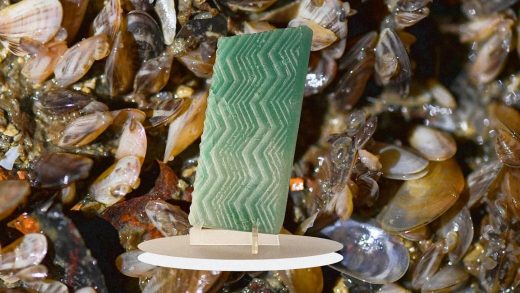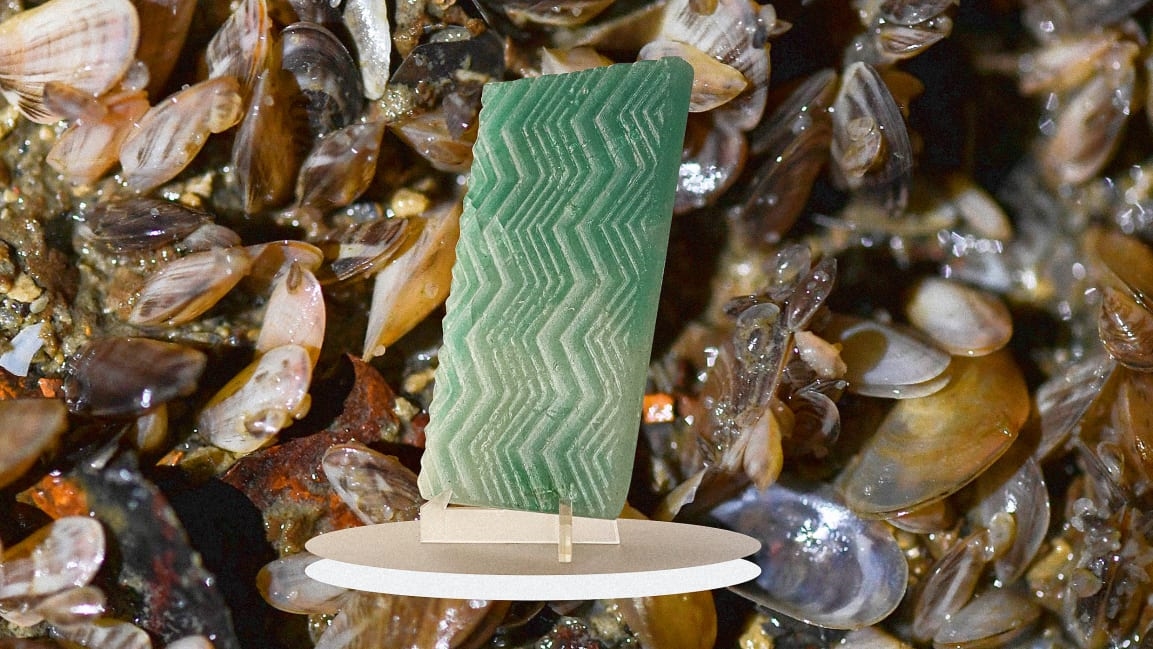Mussel shells are clogging London’s water pipes, but one designer found a surprising solution
About eight years ago, an invasive species called quagga mussel shells started clogging up London’s water pipes and tunnels. Since then, Thames Water, the utility company that’s responsible for the city’s public water supply and wastewater treatment has spent millions of pounds to remove them. Most of these shells have ended up in landfills, but in a few years, you might see them on the walls of your building–albeit in a different form.
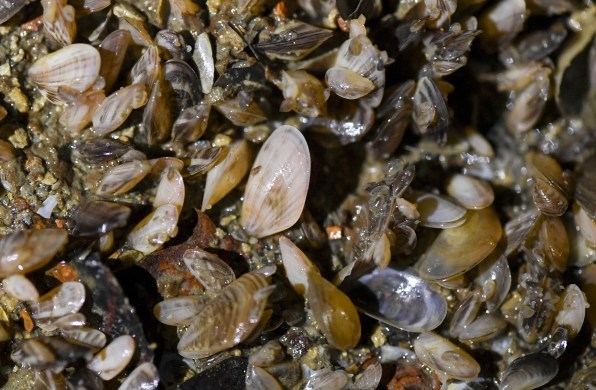
Lulu Harrison, a masters student at Central Saint Martins University in London, has created a bio-glass using ground-up quagga mussel shells. The material was recently exhibited during London Craft Week, where Harrison teamed up with local architecture studio Bureau de Change to develop a series of textured glass tiles inspired by the patterns on 19th-century terracotta chimney pots. It could be years until the glass is commercially viable, but if it gets there, it could become a rare example of sustainable building materials that are also translucent.
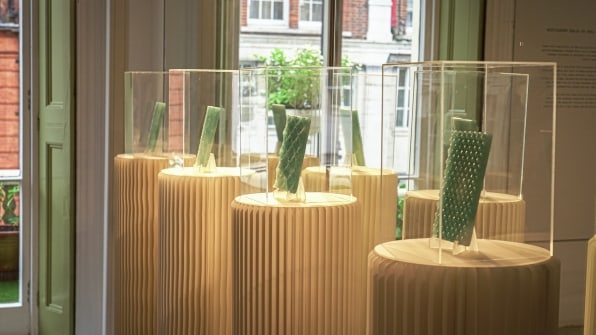
Typical glass consists of 70 percent highly pure silica sand (i.e., not desert sand); soda ash, which helps lower the melting point of the silica; and limestone, which acts as a stabilizer. Glass is infinitely recyclable, but sand mining can erode rivers and disrupt ecosystems.
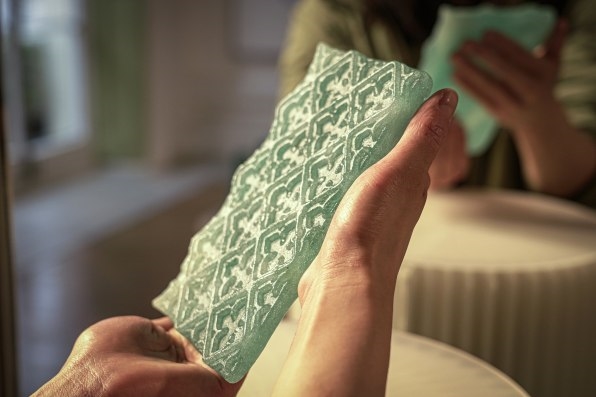
Harrison says her version was inspired by ancient glass-making recipes. In the spirit of “celebrating impurities,” she primarily used regular sand from around the Thames, about 15 to 20 percent of mussel shells with a bit of soda ash, and locally sourced waste wood ash that she hopes can eventually entirely replace the soda ash. This results in something she calls “geo-specific glass”–an approach that could be used in other regions to help cut down on transportation costs by incorporating local resources.
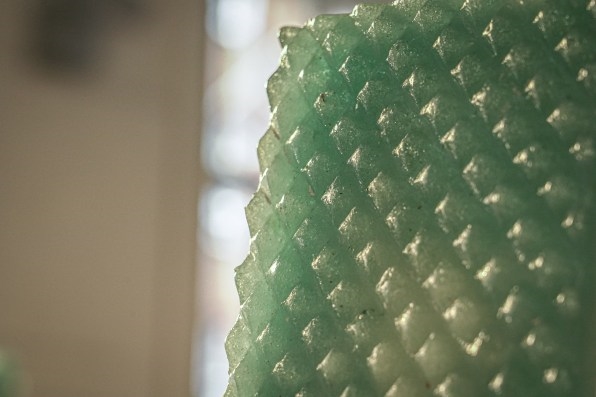
Making the tiles involved a “vigorous processing stage” of washing the collected materials, letting them dry out in the sun, then grinding and sieving them down into a fine powder that looks like flour. The mixture is then processed using an ancient technique called fritting, which involves melting the glass, dunking it in cold water until it breaks up into tiny little granules, and then melting that again. Finally, the melted glass is poured into 3D-printed molds the size of a sheet of paper and left to cool slowly so it doesn’t crack.
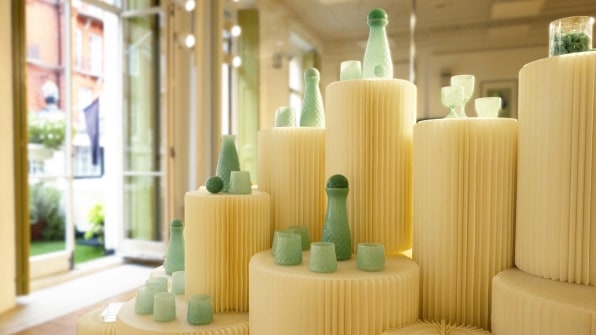
Harrison’s early experiments resulted in a series of blown-glass vases and carafes. But for the exhibition, which was curated by design studio Here, Harrison was paired with Bureau de Change and the material was turned into half a dozen tiles, about the size of a sheet of paper. These were displayed on individual podiums. According to Katerina Dionysopoulou, a cofounder of Bureau de Change, the textured nature of the tiles could make for much more interesting architectural cladding–especially if the team moved away from tiles and found a way to pour the glass in larger molds. She says the tiles could also open up a whole new world of bio-based, translucent materials. “There are so many environmentally-friendly alternatives for solid materials, but there is nothing for anything transparent,” she says.
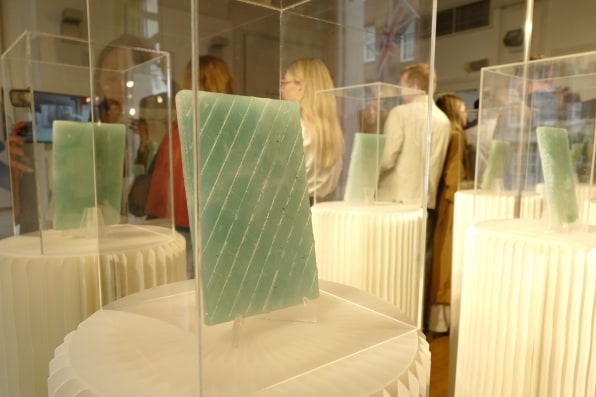
Architectural materials, of course, need to adhere to a tremendous amount of regulations, from durability to fire safety, to be deemed up to code. The process requires lengthy tests, and expensive certifications that can vary from one country to another. “But as we realized with the Covid vaccine, if R&D companies work together, things can actually happen much faster,” says Dionysopoulou.
(30)

